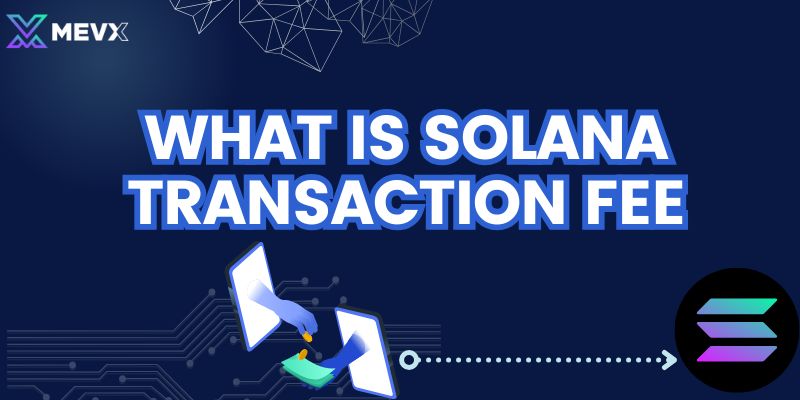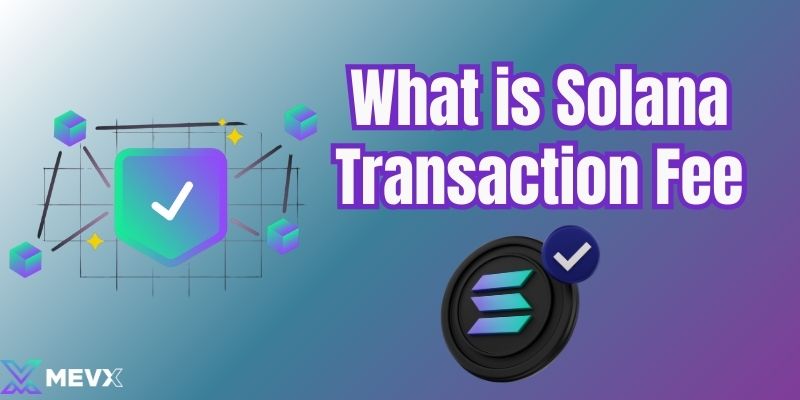What is Solana Transaction Fee? Solana offers incredibly low transaction fees, making it one of the most cost-effective blockchain networks. In this article, we’ll explore how Solana transaction fees work, why they are so affordable, and how they contribute to the blockchain’s scalability and overall user experience.
What is Solana Transaction Fee?
Transaction fees on the Solana blockchain are the costs incurred when users execute transactions or interact with smart contracts. These fees serve multiple purposes, including compensating validators for processing transactions, preventing spam on the network, and maintaining long-term economic stability.
The current base transaction fee on Solana is set at 5,000 lamports per signature, which translates to 0.000005 SOL. At current market rates, this fee is incredibly low, typically ranging from $0.0024 to $0.048 per transaction, making Solana one of the most cost-effective blockchains available today.

Components of Solana Transaction Fees
Solana’s transaction fee model consists of several components:
Base Fee: This is a fixed fee charged for each signature in a transaction. The base fee is currently set at 5,000 lamports (0.000005 SOL) per signature.
- Prioritization Fee: This optional fee allows users to prioritize their transactions over others in the queue. It is specified in microlamports per compute unit (CU) requested and can significantly affect transaction processing speed.
- Compute Units (CUs): Transactions on Solana require computational resources measured in CUs. The number of CUs requested impacts the total fee paid for a transaction.
How fees are calculated
To calculate the total transaction fee on Solana, you need to consider both the base fee and any prioritization fees applied:
- Base Fee Calculation: For a single signature transaction, the base fee is 5,000 lamports.
- Prioritization Fee Calculation: If a user specifies a prioritization fee, it is calculated based on the maximum number of compute units requested multiplied by the microlamport price per CU.
For example, if a transaction requests 600,000 CUs with a prioritization fee of 2,500 microlamports per CU:
- Base Fee = 5,000 lamports
- Prioritization Fee = 600,000 CUs * 2,500 microlamports/CU = 1,500,000 lamports
- Total Fee = Base Fee + Prioritization Fee = 5,000 + 1,500,000 = 1,505,000 lamports (or approximately 0.001505 SOL).
Fee Distribution and Economic Model
The distribution of transaction fees plays a crucial role in maintaining network integrity:
- 50% Burned: Half of all transaction fees collected are permanently removed from circulation (burned), which helps control inflation and increases the value of SOL over time.
- 50% Distributed to Validators: The remaining half is distributed to validators who process and confirm transactions, incentivizing them to maintain network security and performance.
This dual approach not only rewards validators but also contributes to long-term economic stability for the Solana ecosystem.

Why Are Solana Fees So Low?
Several factors contribute to Solana’s remarkably low transaction fees:
- Proof of History (PoH): The innovative PoH consensus mechanism allows for high throughput and quick confirmation times without requiring extensive computational resources.
- Parallel Processing: Solana can process multiple transactions simultaneously through its unique architecture, significantly increasing efficiency.
- High Block Capacity: With a large block size and fast block times (approximately 400 milliseconds), Solana can accommodate many transactions without congestion.
These features collectively enable Solana to maintain low costs while ensuring high performance.
Challenges and Considerations
While Solana’s low fees are attractive, several challenges exist:
- Network Demand: During periods of high demand or congestion, prioritization fees may increase as users compete for faster processing times.
- Complexity for Users: Understanding how to optimize transaction fees can be complicated for new users or developers interacting with the network.
- Potential for Inefficiencies: Users may request more compute units than necessary for their transactions due to the fixed nature of base fees, leading to inefficiencies in resource usage.
Solana’s transaction fee structure is a critical component of its success as a high-performance blockchain. With low costs that make it accessible for users and developers alike, combined with an innovative economic model that supports network security and sustainability, Solana stands out in the crowded cryptocurrency landscape.

As more projects and applications leverage Solana’s capabilities, understanding how transaction fees work will be essential for anyone looking to engage with this dynamic ecosystem. Whether you are a developer building decentralized applications or a user making transactions, being informed about Solana’s transaction fees will enhance your experience on this cutting-edge platform.
In summary, Solana’s approach to transaction fees not only facilitates efficient operations but also aligns with its broader goals of scalability and accessibility within the blockchain space. As the ecosystem continues to evolve, keeping an eye on how these fees adapt will be crucial for future developments in decentralized finance and beyond.
